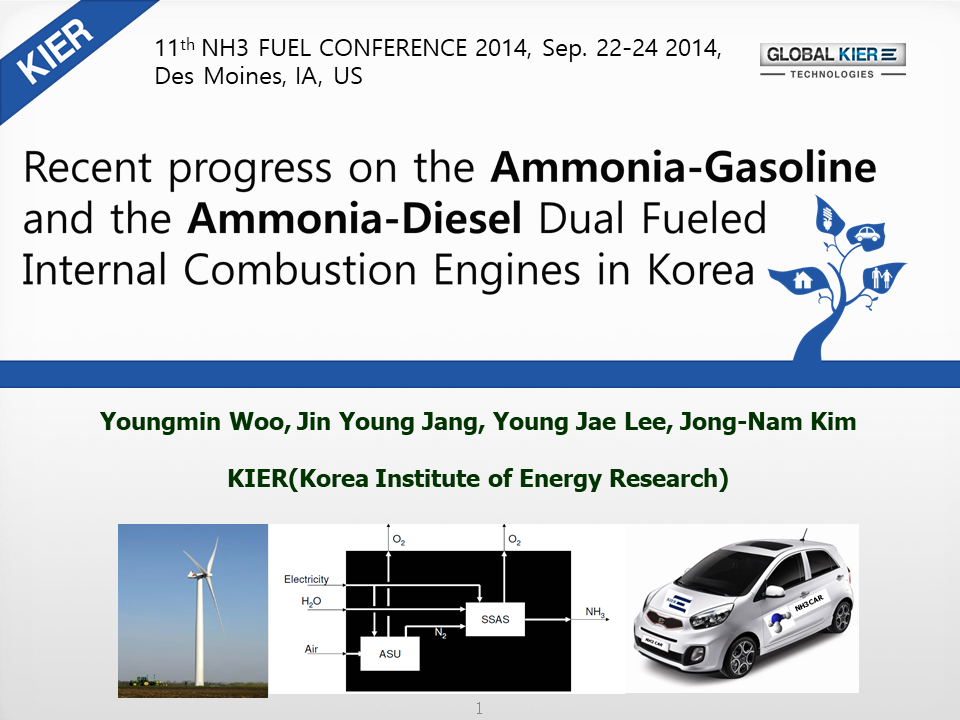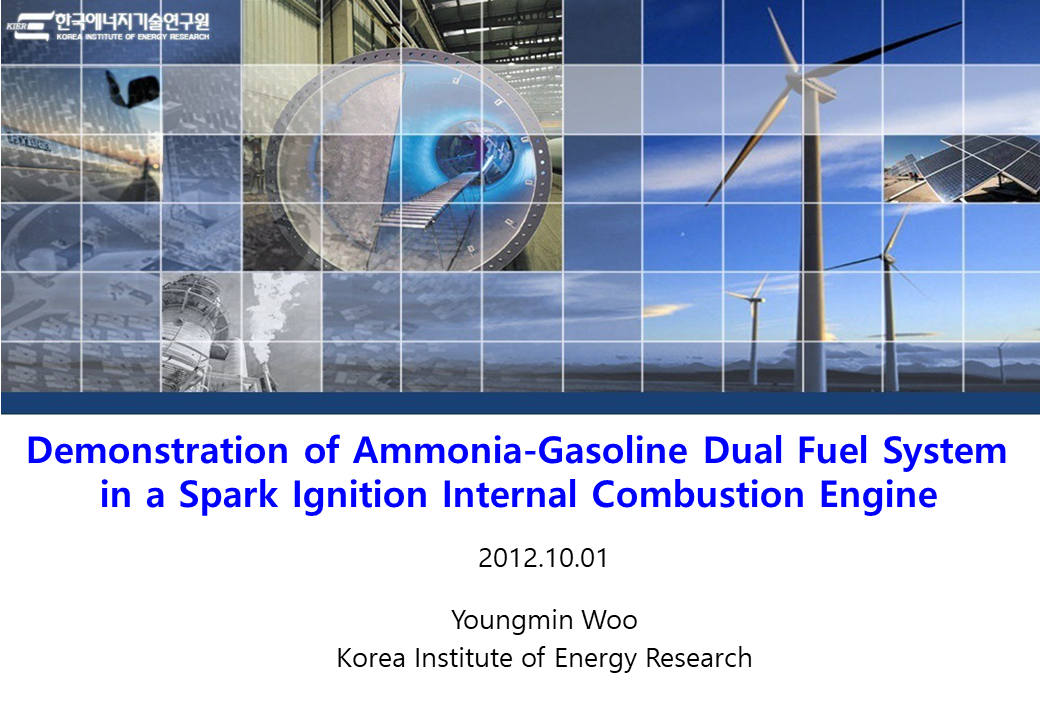Presentation
Overview of the KIER’s Electrochemical Ammonia Synthesis – Present State and Perspective
Ammonia has a potential as a carbon-free energy carrier since it contains 17.6wt% of hydrogen and can be easily stored and transported safely and efficiently. The state-of-the-art industrial process for ammonia production is the Haber-Bosch process. Although high temperature (450–500 °C) and pressure (150–300 bar) are used to dissociate triple-bonded nitrogen and to maximize the ammonia formation, the efficiency of the Haber–Bosch process is limited to 10–15%. Moreover, the process accompanies high greenhouse gases emission since hydrogen is produced from natural gas. In order to overcome the drawbacks of the Haber-Bosch process, the electrochemical ammonia synthesis has been developed as…

